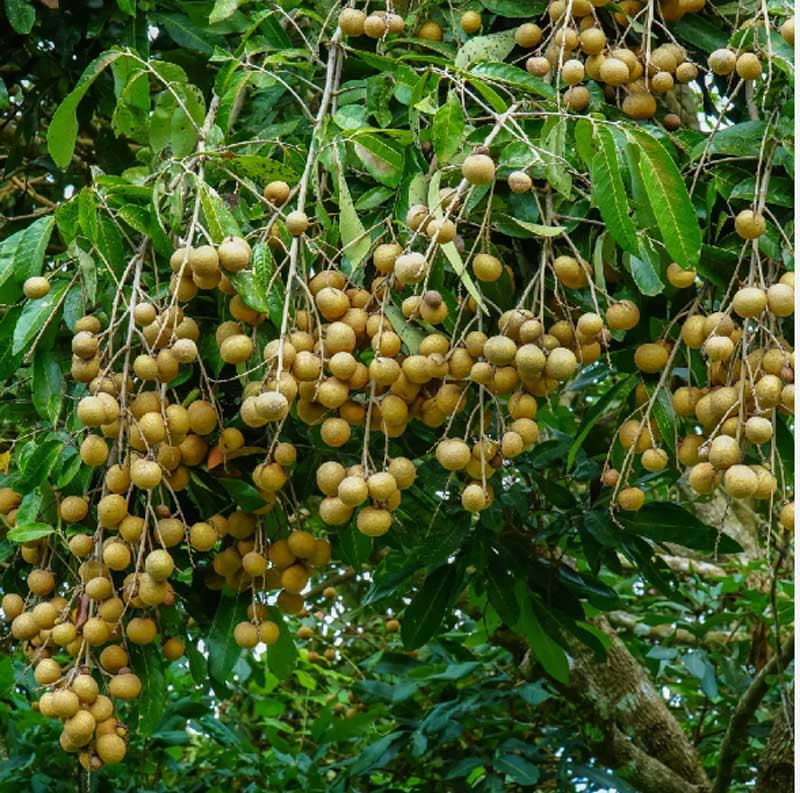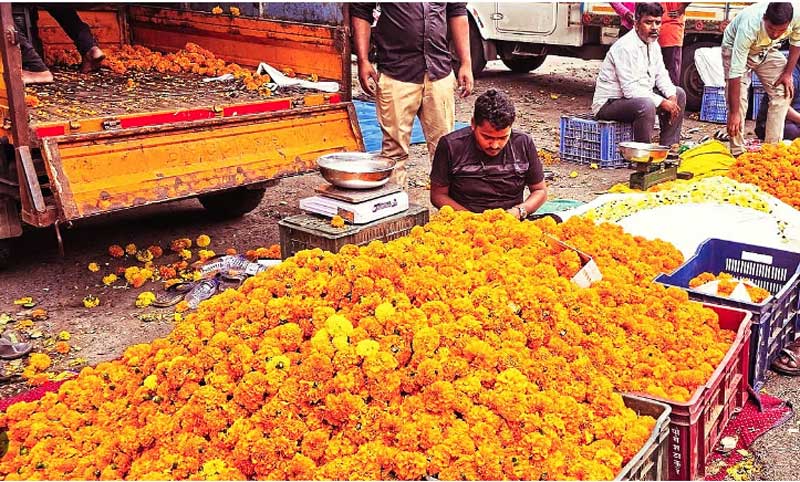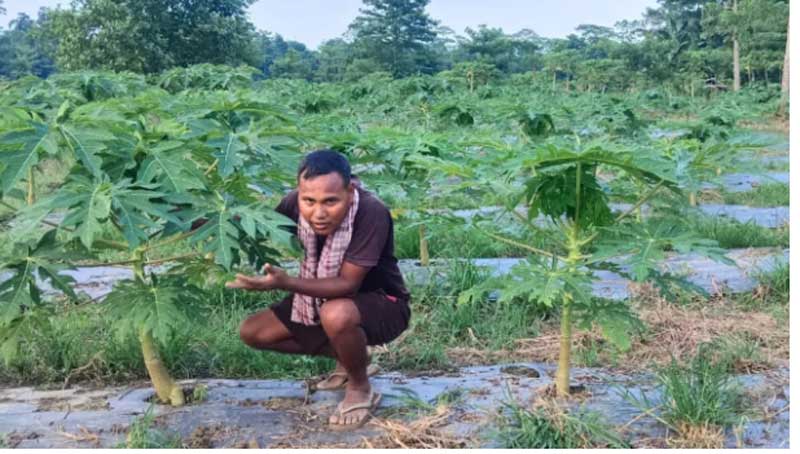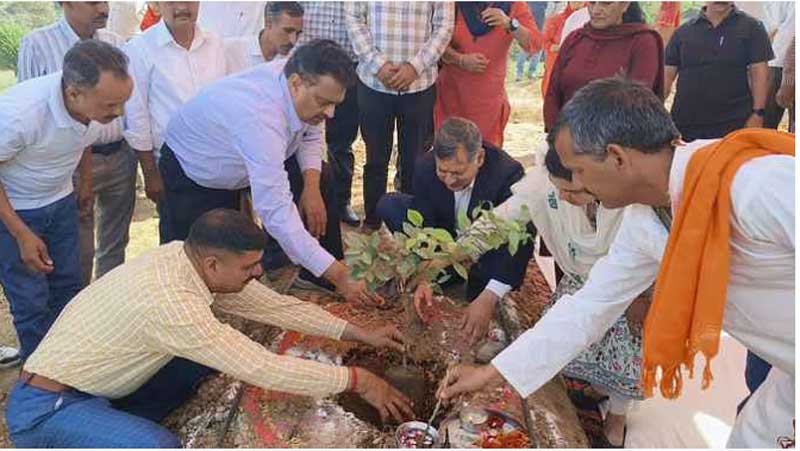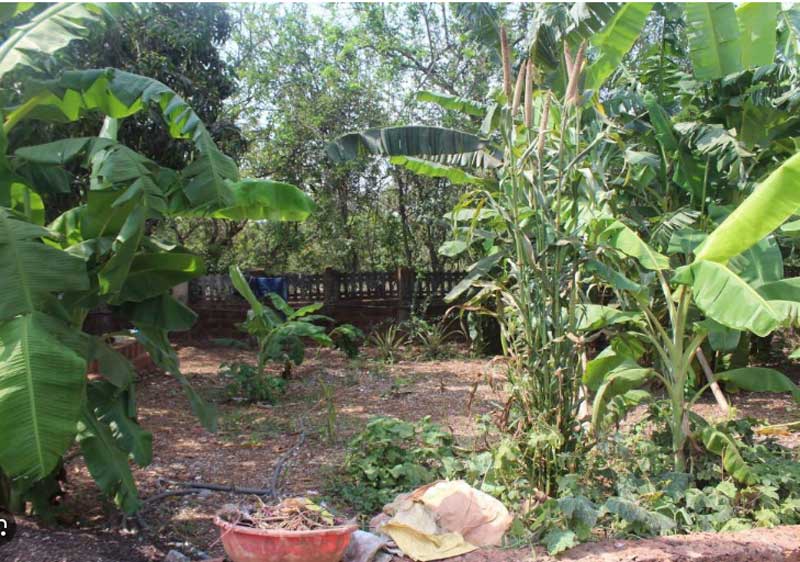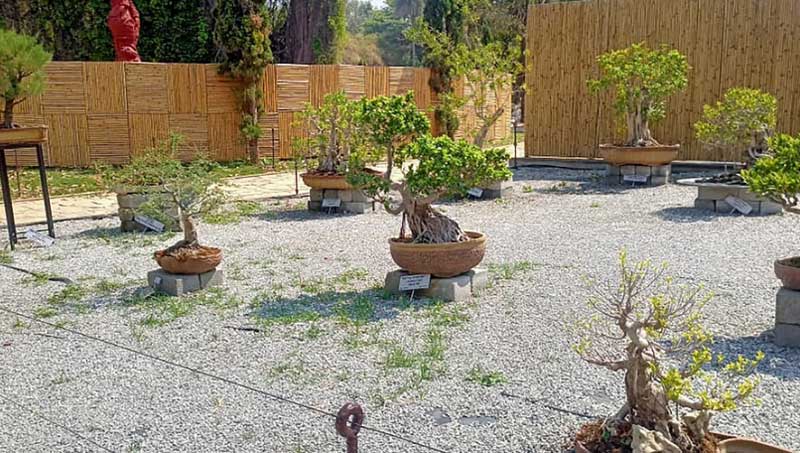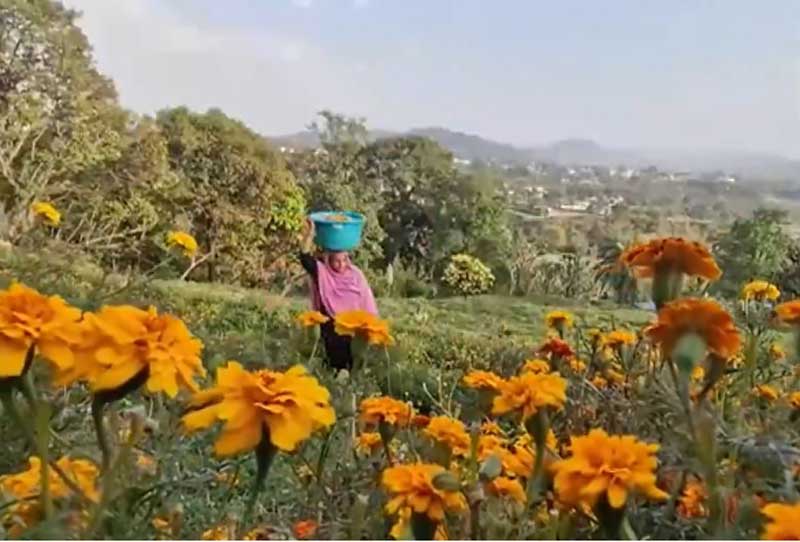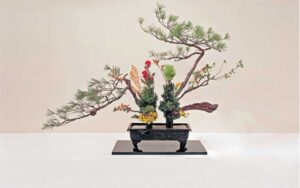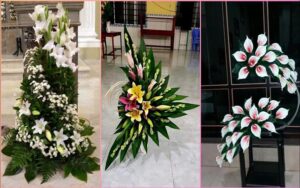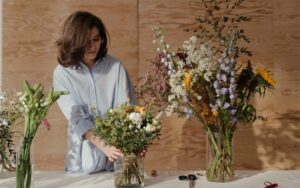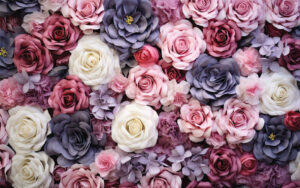Eastern or Japanese styles of Flower arrangement (Part-3)
Dr.T. Suseela, Professor
Dept. of Floriculture and Landscaping, College of Horticulture, Dr.YSRHU, V.R.Gudem
Dr.A.V.D. Dorajee Rao, Professor
Dept. of Floriculture and Landscaping, College of Horticulture, Dr.YSRHU, V.R.Gudem
Dr.Ch. Sai Ratna Sharavani, Assistant Professor
Dept. of Floriculture and Landscaping, College of Horticulture, Dr.YSRHU, V.R.Gudem
Ikebana, the Japanese art of flower arrangement has an ancient and holy origin. The first school of this art was born in Japan more than 600 years ago and it re-awakened in a new culture. This art symbolically explores the connections between humanity, the natural world and the heaven. The word Ikebana means giving life to flowers.
Ikebana is not just a decoration, it is not a beauty just resulting from shapes and colours in Ikebana, the art of flower arrangement is an instrument of spiritual elevation and research of oneself in the harmony of the universe.
Basic considerations for Ikebana arrangement:
- Not mass but few flowers
- Face upside and natural curves
- Originating from one point.
- Flowers should look evolving and rising
Flowers and Foliage material:
- Stems; they form the main basic lines specially the shin and soe
- Ex; defoliated stems , Murraya exotica
- These forms the tai, the third line of ikebana and also used as fillers.
- Ex: Anthurium, Rose ,Gerbera
- Foliage: it is used as main line or filler as per the need of the design.
- Ex: Fish tail palms , Dieffenbachia , Agloanema.
Tools for Ikebana:
- Shears
- Florist wire
- Pebbles and rock
- Sprayer
Supporting materials:
- Hana kubari ( Cross bar)
- Kenzan ( Pin holder

- General rules and Basic styles:In Ikebana arrangements there are thee main lines

- Heaven ‘Shin’
- Man ‘Soe’
- Earth ‘Hikae’
- In any arrangement shin should be the tallest stem followed in terms of height by soe and hikae
- In addition, there are jushi stems or fillers are attached to each of three main lines
- In moribana additional jushi or fillers often used to conceal pin holders
- Different main lines depend upon the size of the vase or the container.
- In a large vase , the length of the shin is equal to twice the combined measurement of the diameter and height of the vase.
- Soe – 3/4th to shin
- Hikae –half to soe
- In ikebana arrangement generally uses only a few flowers of odd numbers except in case of two.
- Main line must be either left or right hand side of the vertical zero degree.
- The angle measurement taken from the tip of the branch.
- In moribana arrangement all the materials used must be fixed firmly in the pin holders.
- In nageire , the branches are very often allowed to rest against the wall of the vase by using bar fixtures.
- Different types of Ikebana :Moribana: Moribana means piled flowers, in which arrangements are made in shallow containers. The flowers and branches are supported with the help of pin holders, which are known as ‘Kenzan’. This arrangement looks very natural and is often called as natural ‘Ikebana’
Nageire :‘Nageire’ means thrown in and flowers are arranged in upright containers.
These are supported with the help of bar fixture, which may be single or split types or cross

Juyubana: Juyubana means free flowers, which can be arranged both in ‘Moribana’ or ‘Nageire’ styles of ‘Ikebana’ . Wood, metal or any other material may be used in addition to flowers

Zeneika : ‘Zeneika’ means abstract and this style does not simulate nature. Straight material with uneven height is used.

Zeneibana : In this style a beautiful sculpture is created using wood, stone, rocks, metal depicting any natural scenery.

Morimono: In this style fruits, vegetables and flowers are arranged and this style looks like ‘English flower Arrangement’. These are arranged on a wooden base called “dai” in japan.

Basic upright style in moribana : Pinholder is placed at the frontal left corner of the container. The shin is fixed in the pinholder at an angle of 10-15°on the left of the vertical 0º.Soe arranged on the left of shin at 45ºfrom vertical axis. Hikae arranged on right side of vertical at the angle of 75º.

Basic slanting style of moribana: Arrangement of the pin holder is positioned rear end of the container towards left side. All the angles and inclinations same as of upright position except that the angle and inclination of shin is interchanged with the soe and vice versa.

Basic upright style in nageire: If the cross bar fixtures is used for this arrangement the opening of the vase will be divided into four quadrants but only one one quadrant is used at the time of flower arrangement. In style of arrangement the angles and inclinations for the main for the three main lines are exactly same as that of moribana. Jushi are also arranged in same quadrant close to respective lines to create camouflage.

Basic slanting style of nageire: Tallest shin is fixed firmly a split–bar fixture and cut end of shin rest against the opposite inside wall of the vase for additional support. For fixing soe draw a support from shin. Hikae being smallest in length it doesn’t need own fixture but can be held in position with the support of the other stems. The angles and inclinations of main lines remain same as that of moribana slanting style.


